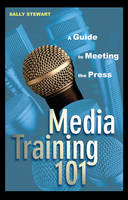Understanding Human Communication
Understanding Human Communication
Du Pre, Athena; Rodman, George; Adler, Ronald B.
Oxford University Press Inc
12/2016
480
Mole
Inglês
9780190297084
Descrição não disponível.
Contents Preface PART ONE: FUNDAMENTALS OF HUMAN COMMUNICATION CHAPTER 1. Communication: What and Why? Communication Defined Characteristics of Communication Modeling Communication Types of Communication Intrapersonal Communication Dyadic/Interpersonal Communication Small Group Communication Organizational Communication Public Communication Mass Communication Communication in a Changing World Changing Technology Changing Discipline Understanding Social Media Mediated Versus Face-to-Face Communication How People Use Social Media Functions of Communication Physical Needs Identity Needs Social Needs Practical Needs Communication Competence: What Makes an Effective Communicator? Communication Competence Defined Characteristics of Competent Communicators Communicating Competently with Social Media Clarifying Misconceptions About Communication Communication Does Not Always Require Complete Understanding Communication Will Not Solve All Problems Communication Isn't Always a Good Thing Meanings Rest in People, Not Words Communication Is Not Simple More Communication Isn't Always Better Features Self-Assessment Your Communication Choices @Work Communication Skills and Career Success Self-Assessment Your Communication Strengths and Goals Understanding Communication Technology Dear Social Media, I Need a Little Space Checklist Use Social Media Courteously and Wisely Ethical Challenge To Communicate or Not to Communicate? CHAPTER 2. The Self, Perception, and Communication Communication and the Self Self-Concept Defined Biology, Personality, and the Self External Influences on the Self-Concept Culture and the Self-Concept The Self-Concept and Communication with Others The Self-Fulfilling Prophecy and Communication Perceiving Others Steps in the Perception Process Influences on Perception Narratives, Perception, and Communication Common Perceptual Tendencies Perception in Mediated Communication Empathy, Perception, and Communication Communication and Identity Management Public and Private Selves Characteristics of Identity Management Why Manage Identities? Identity Management in the Workplace Identity Management in Mediated Communication Identity Management and Honesty Features Self-Assessment Communication and Your Self-Esteem Ethical Challenge Is Honesty Always the Best Policy? Checklist Check Your Perceptions Before Responding Understanding Diversity Managing Identity and Coming Out @Work Humblebragging in Job Interviews Understanding Communication Technology Identity Management in Social Media Ethical Challenge Honesty and Multiple Identities CHAPTER 3. Communication and Culture Understanding Cultures and Cocultures Intercultural and Intergroup Communication: A Matter of Salience Cultural Differences Are Generalizations Cultural Values and Norms Shape Communication Individualism and Collectivism High and Low Context Uncertainty Avoidance Power Distance Beliefs about Talk and Silence Competitive and Cooperative Cultures Cocultures and Communication Ethnicity and Race Regional Differences Sexual Orientation and Gender Identity Religion Physical Ability/Disability Age/Generation Socioeconomic Status Developing Intercultural Communication Competence Increased Contact Tolerance for Ambiguity Open-Mindedness Knowledge and Skill Patience and Perseverance Features @Work Power Distance and Culture in the Workplace Understanding Diversity Communicating with People Who Have Disabilities @Work Organizations Are Cultures, Too Self-Assessment What Is Your Intercultural Sensitivity? Ethical Challenge Civility When Values Clash PART TWO: COMMUNICATION ELEMENTS CHAPTER 4. Language The Nature of Language Language Is Symbolic Meanings Are in People, Not Words Language Is Rule Governed The Power of Language Language Shapes Attitudes, Beliefs, and Values Language Reflects Attitudes, Beliefs, and Values Troublesome Language The Language of Misunderstandings Disruptive Language Evasive Language Gender and Language Features @Work What's in a Name? Understanding Diversity Language and Worldview Ethical Challenge Sexist and Racist Language Understanding Communication Technology Twitter Lingo Incites Controversy Self-Assessment Your Use of Language Ethical Challenge Euphemisms and Equivocations Checklist Choose Your Words Carefully CHAPTER 5. Listening The Value of Listening Misconceptions About Listening Myth 1: Listening and Hearing Are the Same Thing Myth 2: Listening Is a Natural Process Myth 3: All Listeners Receive the Same Message Overcoming Challenges to Effective Listening Reasons for Poor Listening Faulty Listening Habits Types of Listening Task-Oriented Listening Relational Listening Analytical Listening Critical Listening Listening and Social Support Online Social Support Gender and Social Support Types of Supportive Responses When and How to Help Features Checklist 10 Tips for More Mindful Listening @Work Multitasking Can Make You Stupid Self-Assessment What Is Your Listening Style? Checklist Techniques for Listening Nondefensively Checklist Three Ways to Paraphrase Checklist Taking Detailed Notes Ethical Challenge How Carefully Should You Listen? Checklist Evaluating a Speaker's Message Understanding Communication Technology Who Is Listening to You Online? Checklist Factors to Consider Before Offering Advice Checklist When and How to Offer an Analysis Checklist Conditions that Make Paraphrasing a Good Option CHAPTER 6. Nonverbal Communication Characteristics of Nonverbal Communication Nonverbal Behavior Has Communicative Value Nonverbal Communication Is Primarily Relational Nonverbal Communication Is Ambiguous Nonverbal Communication Is Different from Verbal Communication Nonverbal Skills Are Important Influences on Nonverbal Communication Culture Gender Functions of Nonverbal Communication Repeating Substituting Complementing Accenting Regulating Contradicting Deceiving Types of Nonverbal Communication Body Movements Voice Appearance Touch Space Environment Time Building Competence in Nonverbal Communication Tune Out Words Use Perception Checking Pay Attention to Your Own Nonverbal Behavior Features Understanding Communication Technology Nonverbal Expressiveness Online Self-Assessment How Worldly Are Your Nonverbal Communication Skills? @Work Vocal Cues and Career Success Ethical Challenge Clothing and Impression Management @Work Touch and Career Success PART THREE: INTERPERSONAL COMMUNICATION CHAPTER 7. Understanding Interpersonal Communication Characteristics of Interpersonal Communication What Makes Communication Interpersonal? Mediated Interpersonal Communication How We Choose Relational Partners Evaluating Relationship Potential Relationship Reality Check Types of Interpersonal Relationships Friendship Family Relationships Romantic Partners Communication Patterns in Relationships Content and Relational Messages Metacommunication Self-Disclosure in Interpersonal Relationships Dialectical Perspective of Interpersonal Relationships Lies and Evasions Features Ethical Challenge Is It Cheating? Understanding Diversity Can Men and Women Be Just Friends? Checklist Being a Better Friend Checklist Being a Better Family Member Self-Assessment What Is Your Love Language? Checklist Meeting an Online Flame for the First Time Understanding Communication Technology To End This Romance, Just Press "Send" Checklist Self-Disclosing Effectively Ethical Challenge The Ethics of Lying and Evading CHAPTER 8. Managing Conflict in Interpersonal Relationships Understanding Interpersonal Conflict Communication Climates in Interpersonal Relationships Confirming and Disconfirming Messages How Communication Climates Develop Approaches to Conflict Styles of Expressing Conflict Characteristics of an Assertive Message Gender and Conflict Style Cultural Influences on Conflict Conflict in Online Communication Managing Interpersonal Conflicts Methods for Conflict Resolution Steps in Win-Win Problem Solving Features Self-Assessment How Sunny Is Your Communication Climate? Understanding Communication Technology Can You Hear Me Now? Checklist Creating Positive Communication Climates @Work Dealing with Sexual Harassment Ethical Challenge It's Nothing! Self-Assessment How Assertive Are You? Understanding Diversity They Seem to Be Arguing PART FOUR: COMMUNICATION IN GROUPS CHAPTER 9. Communicating in Groups and Teams The Nature of Groups and Teams What Is a Group? What Makes a Group a Team? Virtual Groups Goals of Groups and Their Members Group Goals Individual Goals Characteristics of Groups and Teams Rules and Norms Patterns of Interaction Roles Leadership and Communication Understanding Leadership Leadership Styles Dimensions of Leadership Becoming a Leader Followership and Communication Types of Followers The Power of Followers Features Checklist Building an Effective Team Online Checklist Getting Slackers to Do Their Share Ethical Challenge Rules for Hidden Agendas @Work "I'll Do It Myself"--Or Should I? Checklist Working with a Difficult Boss Self-Assessment Your Leadership Approach Self-Assessment How Good a Follower Are You? CHAPTER 10. Solving Problems in Groups and Teams Problem Solving in Groups: When and Why Advantages of Group Problem Solving When to Use Groups for Problem Solving Setting the Stage for Problem Solving Maintain Positive Relationships Recognize Stages of Team Development Group Problem-Solving Strategies and Formats Group Discussion Formats Solving Problems in Virtual Groups Approaches and Stages in Problem Solving A Structured Problem-Solving Approach Decision-Making Methods Overcoming Dangers in Group Discussion Information Underload and Overload Unequal Participation Pressure to Conform Features Understanding Diversity Maximizing the Effectiveness of Multicultural Teams Checklist Is This a Good Opportunity for Teamwork? Self-Assessment How Effective Is Your Team? Checklist Dealing with Difficult Team Members @Work The Power of Constructive Dialogue Understanding Communication Technology Developing Trust Long Distance Checklist Coping with Information Overload Ethical Challenge Overly Talkative and Quiet Group Members Checklist Avoiding Groupthink PART FIVE: PUBLIC COMMUNICATION CHAPTER 11. Preparing and Presenting Your Speech Getting Started Choosing Your Topic Defining Your Purpose Writing a Purpose Statement Stating Your Thesis Analyzing the Speaking Situation The Listeners The Occasion Gathering Information Online Research Library Research Interviewing Survey Research Managing Communication Apprehension Facilitative and Debilitative Communication Apprehension Sources of Debilitative Communication Apprehension Overcoming Debilitative Communication Apprehension Presenting Your Speech Choosing an Effective Type of Delivery Practicing Your Speech Guidelines for Delivery Sample Speech Features Ethical Challenge Adapting to Speaking Situations @Work Sample Analysis of a Speaking Situation Checklist Evaluating Websites Self-Assessment Speech Anxiety Symptoms Checklist Practicing Your Presentation Understanding Diversity A Compendium of American Dialects CHAPTER 12. Organization and Support Structuring Your Speech Your Working Outline Your Formal Outline Your Speaking Notes Principles of Outlining Standard Symbols Standard Format The Rule of Division The Rule of Parallel Wording Organizing Your Outline into a Logical Pattern Time Patterns Space Patterns Topic Patterns Problem-Solution Patterns Cause-Effect Patterns Monroe's Motivated Sequence Beginnings, Endings, and Using Transitions The Introduction The Conclusion Using Transitions Supporting Material Functions of Supporting Material Types of Supporting Material Styles of Support: Narration and Citation Sample Speech Features Self-Assessment Main Points and Subpoints Understanding Diversity Nontraditional Patterns of Organization Checklist Capturing Audience Attention Checklist Effective Conclusions @Work Organizing Business Presentations Ethical Challenge The Ethics of Support Understanding Communication Technology Plagiarism in a Digital Age CHAPTER 13. Informative Speaking Types of Informative Speaking By Content By Purpose Informative Versus Persuasive Topics An Informative Topic Tends to Be Noncontroversial The Informative Speaker Does Not Intend to Change Audience Attitudes Techniques of Informative Speaking Define a Specific Informative Purpose Create Information Hunger Make It Easy to Listen Use Clear, Simple Language Use a Clear Organization and Structure Use Supporting Material Effectively Emphasize Important Points Generate Audience Involvement Using Visual Aids Types of Visual Aids Media for the Presentation of Visual Aids Rules for Using Visual Aids Using Powerpoint Sample Speech Features Self-Assessment Are You Overloaded with Information? Understanding Diversity How Culture Affects Information Ethical Challenge The Ethics of Simplicity @Work The Pros and Cons of Presentation Software CHAPTER 14. Persuasive Speaking Characteristics of Persuasion Persuasion Is Not Coercive Persuasion Is Usually Incremental Persuasion Is Interactive Persuasion Can Be Ethical Categorizing Types of Persuasion By Types of Proposition By Desired Outcome By Directness of Approach Creating the Persuasive Message Set a Clear, Persuasive Purpose Structure the Message Carefully Use Solid Evidence Avoid Fallacies Adapting to the Audience Establish Common Ground Organize According to the Expected Response Neutralize Potential Hostility Building Credibility as a Speaker Competence Character Charisma Sample Speech Features Ethical Challenge Analyzing Communication Behaviors Understanding Diversity Cultural Differences in Persuasion Ethical Challenge Adapting to a Hostile Audience Self-Assessment Persuasive Speech @Work Persuasion Skills in the World of Sales Checklist Ethos, Pathos, and Logos Notes Glossary Credits Index
Este título pertence ao(s) assunto(s) indicados(s). Para ver outros títulos clique no assunto desejado.
Contents Preface PART ONE: FUNDAMENTALS OF HUMAN COMMUNICATION CHAPTER 1. Communication: What and Why? Communication Defined Characteristics of Communication Modeling Communication Types of Communication Intrapersonal Communication Dyadic/Interpersonal Communication Small Group Communication Organizational Communication Public Communication Mass Communication Communication in a Changing World Changing Technology Changing Discipline Understanding Social Media Mediated Versus Face-to-Face Communication How People Use Social Media Functions of Communication Physical Needs Identity Needs Social Needs Practical Needs Communication Competence: What Makes an Effective Communicator? Communication Competence Defined Characteristics of Competent Communicators Communicating Competently with Social Media Clarifying Misconceptions About Communication Communication Does Not Always Require Complete Understanding Communication Will Not Solve All Problems Communication Isn't Always a Good Thing Meanings Rest in People, Not Words Communication Is Not Simple More Communication Isn't Always Better Features Self-Assessment Your Communication Choices @Work Communication Skills and Career Success Self-Assessment Your Communication Strengths and Goals Understanding Communication Technology Dear Social Media, I Need a Little Space Checklist Use Social Media Courteously and Wisely Ethical Challenge To Communicate or Not to Communicate? CHAPTER 2. The Self, Perception, and Communication Communication and the Self Self-Concept Defined Biology, Personality, and the Self External Influences on the Self-Concept Culture and the Self-Concept The Self-Concept and Communication with Others The Self-Fulfilling Prophecy and Communication Perceiving Others Steps in the Perception Process Influences on Perception Narratives, Perception, and Communication Common Perceptual Tendencies Perception in Mediated Communication Empathy, Perception, and Communication Communication and Identity Management Public and Private Selves Characteristics of Identity Management Why Manage Identities? Identity Management in the Workplace Identity Management in Mediated Communication Identity Management and Honesty Features Self-Assessment Communication and Your Self-Esteem Ethical Challenge Is Honesty Always the Best Policy? Checklist Check Your Perceptions Before Responding Understanding Diversity Managing Identity and Coming Out @Work Humblebragging in Job Interviews Understanding Communication Technology Identity Management in Social Media Ethical Challenge Honesty and Multiple Identities CHAPTER 3. Communication and Culture Understanding Cultures and Cocultures Intercultural and Intergroup Communication: A Matter of Salience Cultural Differences Are Generalizations Cultural Values and Norms Shape Communication Individualism and Collectivism High and Low Context Uncertainty Avoidance Power Distance Beliefs about Talk and Silence Competitive and Cooperative Cultures Cocultures and Communication Ethnicity and Race Regional Differences Sexual Orientation and Gender Identity Religion Physical Ability/Disability Age/Generation Socioeconomic Status Developing Intercultural Communication Competence Increased Contact Tolerance for Ambiguity Open-Mindedness Knowledge and Skill Patience and Perseverance Features @Work Power Distance and Culture in the Workplace Understanding Diversity Communicating with People Who Have Disabilities @Work Organizations Are Cultures, Too Self-Assessment What Is Your Intercultural Sensitivity? Ethical Challenge Civility When Values Clash PART TWO: COMMUNICATION ELEMENTS CHAPTER 4. Language The Nature of Language Language Is Symbolic Meanings Are in People, Not Words Language Is Rule Governed The Power of Language Language Shapes Attitudes, Beliefs, and Values Language Reflects Attitudes, Beliefs, and Values Troublesome Language The Language of Misunderstandings Disruptive Language Evasive Language Gender and Language Features @Work What's in a Name? Understanding Diversity Language and Worldview Ethical Challenge Sexist and Racist Language Understanding Communication Technology Twitter Lingo Incites Controversy Self-Assessment Your Use of Language Ethical Challenge Euphemisms and Equivocations Checklist Choose Your Words Carefully CHAPTER 5. Listening The Value of Listening Misconceptions About Listening Myth 1: Listening and Hearing Are the Same Thing Myth 2: Listening Is a Natural Process Myth 3: All Listeners Receive the Same Message Overcoming Challenges to Effective Listening Reasons for Poor Listening Faulty Listening Habits Types of Listening Task-Oriented Listening Relational Listening Analytical Listening Critical Listening Listening and Social Support Online Social Support Gender and Social Support Types of Supportive Responses When and How to Help Features Checklist 10 Tips for More Mindful Listening @Work Multitasking Can Make You Stupid Self-Assessment What Is Your Listening Style? Checklist Techniques for Listening Nondefensively Checklist Three Ways to Paraphrase Checklist Taking Detailed Notes Ethical Challenge How Carefully Should You Listen? Checklist Evaluating a Speaker's Message Understanding Communication Technology Who Is Listening to You Online? Checklist Factors to Consider Before Offering Advice Checklist When and How to Offer an Analysis Checklist Conditions that Make Paraphrasing a Good Option CHAPTER 6. Nonverbal Communication Characteristics of Nonverbal Communication Nonverbal Behavior Has Communicative Value Nonverbal Communication Is Primarily Relational Nonverbal Communication Is Ambiguous Nonverbal Communication Is Different from Verbal Communication Nonverbal Skills Are Important Influences on Nonverbal Communication Culture Gender Functions of Nonverbal Communication Repeating Substituting Complementing Accenting Regulating Contradicting Deceiving Types of Nonverbal Communication Body Movements Voice Appearance Touch Space Environment Time Building Competence in Nonverbal Communication Tune Out Words Use Perception Checking Pay Attention to Your Own Nonverbal Behavior Features Understanding Communication Technology Nonverbal Expressiveness Online Self-Assessment How Worldly Are Your Nonverbal Communication Skills? @Work Vocal Cues and Career Success Ethical Challenge Clothing and Impression Management @Work Touch and Career Success PART THREE: INTERPERSONAL COMMUNICATION CHAPTER 7. Understanding Interpersonal Communication Characteristics of Interpersonal Communication What Makes Communication Interpersonal? Mediated Interpersonal Communication How We Choose Relational Partners Evaluating Relationship Potential Relationship Reality Check Types of Interpersonal Relationships Friendship Family Relationships Romantic Partners Communication Patterns in Relationships Content and Relational Messages Metacommunication Self-Disclosure in Interpersonal Relationships Dialectical Perspective of Interpersonal Relationships Lies and Evasions Features Ethical Challenge Is It Cheating? Understanding Diversity Can Men and Women Be Just Friends? Checklist Being a Better Friend Checklist Being a Better Family Member Self-Assessment What Is Your Love Language? Checklist Meeting an Online Flame for the First Time Understanding Communication Technology To End This Romance, Just Press "Send" Checklist Self-Disclosing Effectively Ethical Challenge The Ethics of Lying and Evading CHAPTER 8. Managing Conflict in Interpersonal Relationships Understanding Interpersonal Conflict Communication Climates in Interpersonal Relationships Confirming and Disconfirming Messages How Communication Climates Develop Approaches to Conflict Styles of Expressing Conflict Characteristics of an Assertive Message Gender and Conflict Style Cultural Influences on Conflict Conflict in Online Communication Managing Interpersonal Conflicts Methods for Conflict Resolution Steps in Win-Win Problem Solving Features Self-Assessment How Sunny Is Your Communication Climate? Understanding Communication Technology Can You Hear Me Now? Checklist Creating Positive Communication Climates @Work Dealing with Sexual Harassment Ethical Challenge It's Nothing! Self-Assessment How Assertive Are You? Understanding Diversity They Seem to Be Arguing PART FOUR: COMMUNICATION IN GROUPS CHAPTER 9. Communicating in Groups and Teams The Nature of Groups and Teams What Is a Group? What Makes a Group a Team? Virtual Groups Goals of Groups and Their Members Group Goals Individual Goals Characteristics of Groups and Teams Rules and Norms Patterns of Interaction Roles Leadership and Communication Understanding Leadership Leadership Styles Dimensions of Leadership Becoming a Leader Followership and Communication Types of Followers The Power of Followers Features Checklist Building an Effective Team Online Checklist Getting Slackers to Do Their Share Ethical Challenge Rules for Hidden Agendas @Work "I'll Do It Myself"--Or Should I? Checklist Working with a Difficult Boss Self-Assessment Your Leadership Approach Self-Assessment How Good a Follower Are You? CHAPTER 10. Solving Problems in Groups and Teams Problem Solving in Groups: When and Why Advantages of Group Problem Solving When to Use Groups for Problem Solving Setting the Stage for Problem Solving Maintain Positive Relationships Recognize Stages of Team Development Group Problem-Solving Strategies and Formats Group Discussion Formats Solving Problems in Virtual Groups Approaches and Stages in Problem Solving A Structured Problem-Solving Approach Decision-Making Methods Overcoming Dangers in Group Discussion Information Underload and Overload Unequal Participation Pressure to Conform Features Understanding Diversity Maximizing the Effectiveness of Multicultural Teams Checklist Is This a Good Opportunity for Teamwork? Self-Assessment How Effective Is Your Team? Checklist Dealing with Difficult Team Members @Work The Power of Constructive Dialogue Understanding Communication Technology Developing Trust Long Distance Checklist Coping with Information Overload Ethical Challenge Overly Talkative and Quiet Group Members Checklist Avoiding Groupthink PART FIVE: PUBLIC COMMUNICATION CHAPTER 11. Preparing and Presenting Your Speech Getting Started Choosing Your Topic Defining Your Purpose Writing a Purpose Statement Stating Your Thesis Analyzing the Speaking Situation The Listeners The Occasion Gathering Information Online Research Library Research Interviewing Survey Research Managing Communication Apprehension Facilitative and Debilitative Communication Apprehension Sources of Debilitative Communication Apprehension Overcoming Debilitative Communication Apprehension Presenting Your Speech Choosing an Effective Type of Delivery Practicing Your Speech Guidelines for Delivery Sample Speech Features Ethical Challenge Adapting to Speaking Situations @Work Sample Analysis of a Speaking Situation Checklist Evaluating Websites Self-Assessment Speech Anxiety Symptoms Checklist Practicing Your Presentation Understanding Diversity A Compendium of American Dialects CHAPTER 12. Organization and Support Structuring Your Speech Your Working Outline Your Formal Outline Your Speaking Notes Principles of Outlining Standard Symbols Standard Format The Rule of Division The Rule of Parallel Wording Organizing Your Outline into a Logical Pattern Time Patterns Space Patterns Topic Patterns Problem-Solution Patterns Cause-Effect Patterns Monroe's Motivated Sequence Beginnings, Endings, and Using Transitions The Introduction The Conclusion Using Transitions Supporting Material Functions of Supporting Material Types of Supporting Material Styles of Support: Narration and Citation Sample Speech Features Self-Assessment Main Points and Subpoints Understanding Diversity Nontraditional Patterns of Organization Checklist Capturing Audience Attention Checklist Effective Conclusions @Work Organizing Business Presentations Ethical Challenge The Ethics of Support Understanding Communication Technology Plagiarism in a Digital Age CHAPTER 13. Informative Speaking Types of Informative Speaking By Content By Purpose Informative Versus Persuasive Topics An Informative Topic Tends to Be Noncontroversial The Informative Speaker Does Not Intend to Change Audience Attitudes Techniques of Informative Speaking Define a Specific Informative Purpose Create Information Hunger Make It Easy to Listen Use Clear, Simple Language Use a Clear Organization and Structure Use Supporting Material Effectively Emphasize Important Points Generate Audience Involvement Using Visual Aids Types of Visual Aids Media for the Presentation of Visual Aids Rules for Using Visual Aids Using Powerpoint Sample Speech Features Self-Assessment Are You Overloaded with Information? Understanding Diversity How Culture Affects Information Ethical Challenge The Ethics of Simplicity @Work The Pros and Cons of Presentation Software CHAPTER 14. Persuasive Speaking Characteristics of Persuasion Persuasion Is Not Coercive Persuasion Is Usually Incremental Persuasion Is Interactive Persuasion Can Be Ethical Categorizing Types of Persuasion By Types of Proposition By Desired Outcome By Directness of Approach Creating the Persuasive Message Set a Clear, Persuasive Purpose Structure the Message Carefully Use Solid Evidence Avoid Fallacies Adapting to the Audience Establish Common Ground Organize According to the Expected Response Neutralize Potential Hostility Building Credibility as a Speaker Competence Character Charisma Sample Speech Features Ethical Challenge Analyzing Communication Behaviors Understanding Diversity Cultural Differences in Persuasion Ethical Challenge Adapting to a Hostile Audience Self-Assessment Persuasive Speech @Work Persuasion Skills in the World of Sales Checklist Ethos, Pathos, and Logos Notes Glossary Credits Index
Este título pertence ao(s) assunto(s) indicados(s). Para ver outros títulos clique no assunto desejado.












